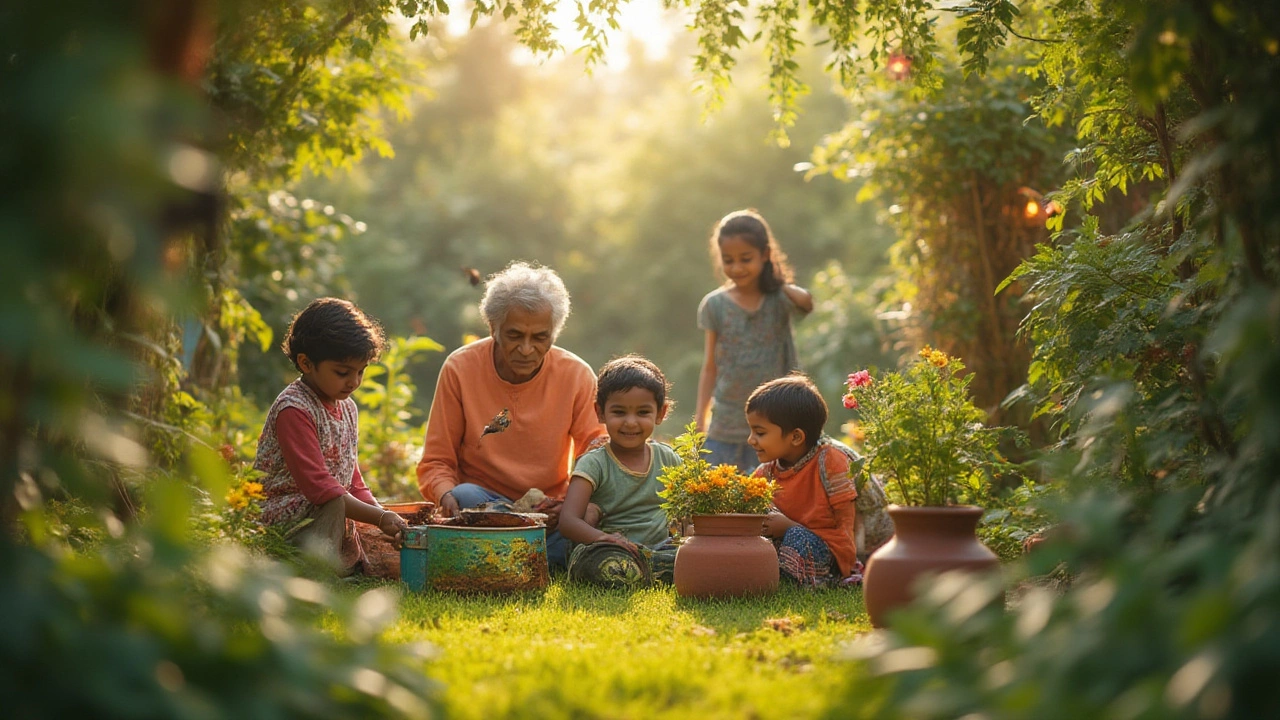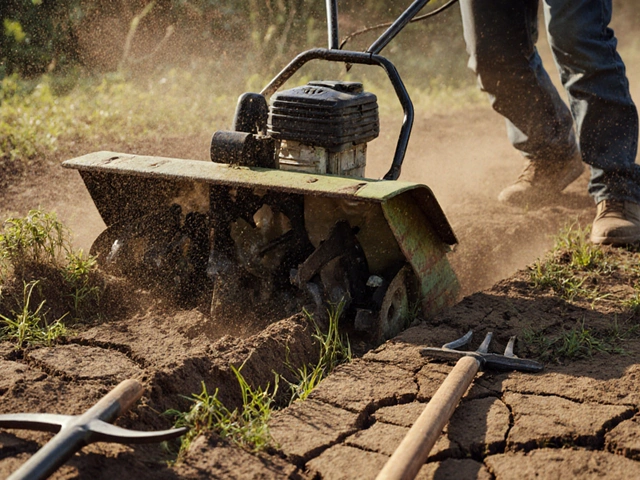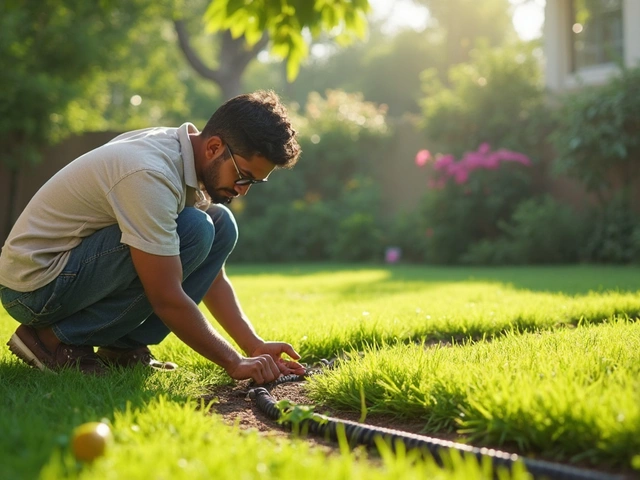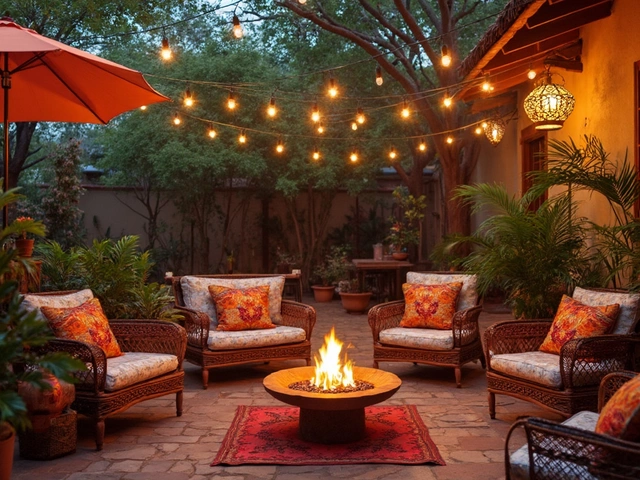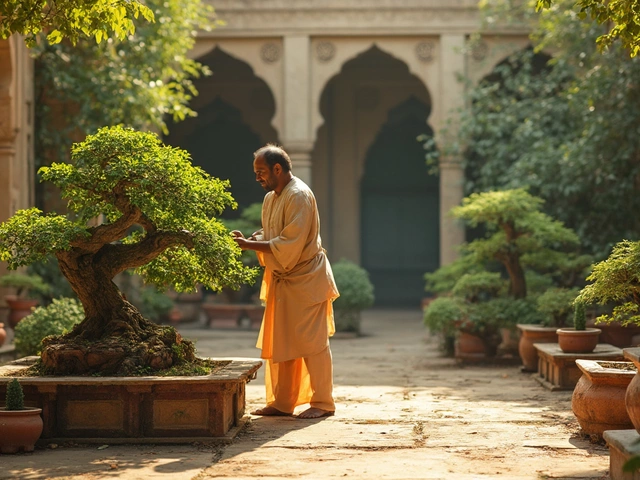Most backyards gulp down precious water, guzzle fertilizers, and bake under pesticides way more than they need to. The traditional “perfect lawn” is an environmental nightmare—gobbling up over 3 trillion gallons of water and 200 million gallons of gas for mowing in the US alone every year. In July of 2025, people are starting to ditch that lush, green monoculture. The real gold is a yard that supports birds, bees, butterflies, and the planet, not just a golf-course look. It doesn’t mean giving up on beauty or fun—just flipping a few habits. You can grow a yard that's way easier to care for and plays nice with nature. Curious about turning your patch of ground into an eco-haven? I’ve dug deep for the most practical tricks (and a few you probably haven’t heard before).
Why Ditch the Traditional Lawn?
Lawns might look simple, but making grass grow thick and perfect is not. You have to dump on fertilizers, mow every week, and water, sometimes for hours. Studies show one hour of gas mowing gives off as much pollution as driving 350 miles. For all that effort? Most lawns are nearly useless for pollinators or birds. The grass people plant is usually from Europe or Asia—our native insects can’t even eat it, let alone thrive there.
On top of that, fertilizer runoff messes up local streams and lakes, a big reason behind those gross summer algae blooms. And every time it rains, yards with compacted soil and no deep roots can’t soak up water—the stormwater just slides off, taking pesticides and weed killers along for the ride. This leads to increased flooding and water pollution. In short, a typical lawn damages the environment more than you’d ever guess.
The flip side? Yards with native plants act like mini habitats. They’re proven to suck in more birds and butterflies (Douglas Tallamy’s research at the University of Delaware found one small yard filled with native plants supported almost four times as many caterpillar species—aka bird food—compared to turf). These yards handle heavy rain and drought better, too, thanks to bigger and deeper root systems.
Many cities now even offer rebates for people who replace parts of their lawns with prairie gardens or water-wise plants. At least seven US states in 2025 now have ‘bee lawn’ or ‘turf conversion’ programs that’ll pay you to swap grass for something better.
Ready to do less work for more good? Turns out, letting parts of your grass go wild makes your life easier and saves money over time—no more mad dash before a neighborhood barbecue because the grass is looking shaggy. In short, “eco-friendly” isn’t just good for birds; it’s good for your weekends.
Planting for People, Pollinators, and the Planet
If you want a yard that feels alive (not just green), plant what belongs there. Native wildflowers, shrubs, and trees—plants that evolved in your area—are ridiculously tough once they get going. They handle local bugs, weather swings, and diseases far better than anything that comes in a plastic pot from Europe or South America. Plus, they bloom with way more color and attract butterflies, bees, hummingbirds—real backyard action.
Take a walk around your block or look up what grows nearby—chances are you’ll spot purple coneflower, black-eyed Susan, milkweed, goldenrod, blue grama grass, or serviceberry trees in a native-friendly garden. These plants have roots that easily stretch down several feet, making them drought monsters and soil healers. Grass? Its roots rarely get deeper than a few inches.
Want stats? Monarch butterflies rely on milkweed; without it, their caterpillars can’t eat. Every monarch that visits your yard in August or September might fly 3,000 miles to Mexico—if you give them a place to lay eggs. Same goes for songbirds. According to the National Audubon Society, 96% of North American land birds feed their babies insects found only on native plants and trees. If you plant a single oak tree, you could support up to 534 species of caterpillars.
Here are a few easy changes you can make that will get you more color, less work, and a backyard full of life:
- Swap patches of lawn for native wildflowers or prairie grasses. Just start with a corner or border—you don’t need to dig up the whole yard at once.
- Pick drought-tolerant shrubs for edges or privacy. Try ninebark, viburnum, or native dogwood for multi-season beauty.
- Layer plant heights: tall grasses or sunflowers at the back, medium coneflowers in the middle, and low sedum or violets up front. This gives a wild look and more places for critters to hide.
- If you must keep some lawn, stick with lower-water varieties like buffalograss or microclover.
- Leave fallen leaves in beds—they shelter caterpillars over winter, then break down to feed your soil.
Pick whatever fits your space. Even a 3x3-foot pollinator patch is worthwhile. The secret is picking plants that belong, then watching wildlife show up for free.
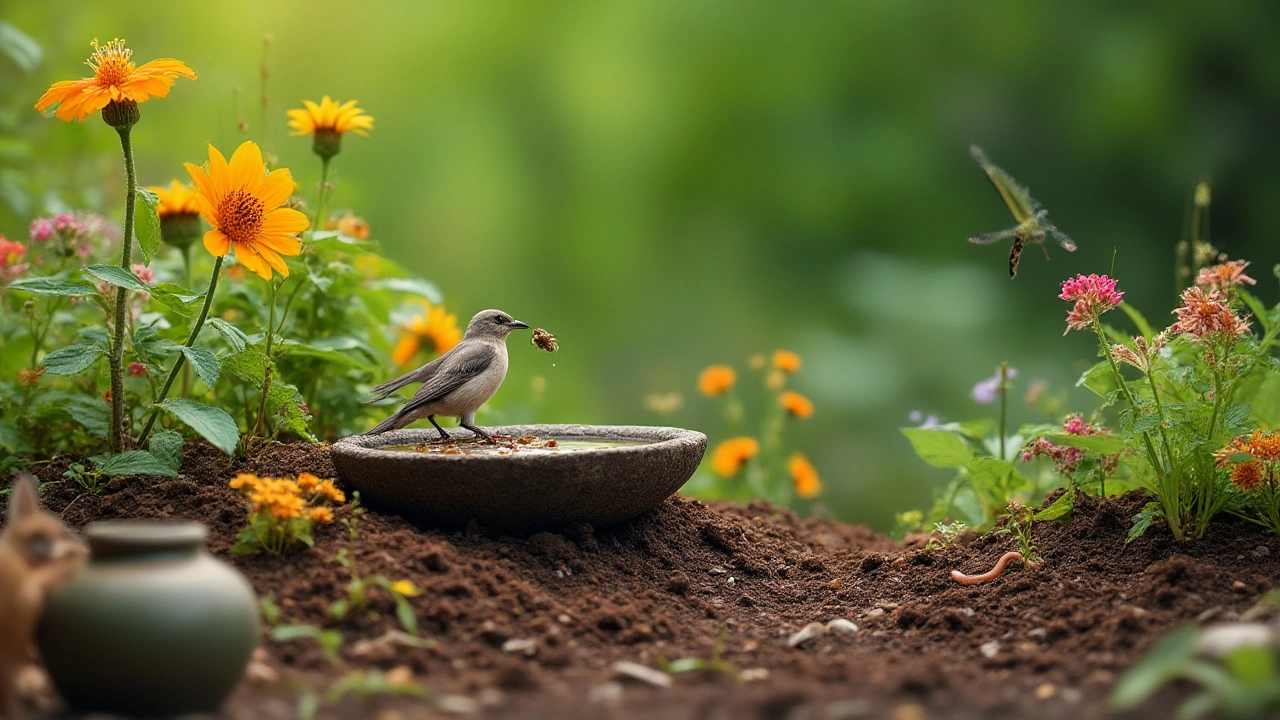
Soil, Water, and Yard Waste: Reducing Impact Where It Counts
Soil is a living thing, not just dirt. One tablespoon of healthy soil can have more microbes in it than there are people on Earth. Healthy soil holds onto rain, grows stronger roots, and needs way less fertilizer. But most lawns are compacted, barely alive, or so pumped with chemicals that even the worms want out.
First tip: ditch synthetic fertilizers whenever you can. Compost feeds soil in a natural, slow-release way—plus, you can make it from your own kitchen scraps and yard trimmings. In fact, the EPA found that more than 28% of what we throw in landfills could be composted. That’s easier than it sounds: toss apple cores, coffee grounds, eggshells, and grass clippings into a bin. Stir it every week or two. When it’s brown and crumbly, spread it on your beds. Your plants—and any robins hunting for worms—will thank you.
Water is another big deal. Traditional sprinklers waste most of the water you pay for, evaporating it or spraying sidewalks. Overhead watering can lose up to 50% of the water to evaporation alone—especially in July’s heat. A simple switch to drip irrigation or soaker hoses means every drop gets where it should go: right to the plant’s roots. Even better, these methods are cheap, and lots of areas will rebate for them. Watering early in the morning, mulching with wood chips or leaves, and grouping plants with similar water needs together makes a visible difference in your bill and the environment.
And let’s talk about yard waste—leaf blowers, bagged clippings, piles of pruned branches. The US sent over 35 million tons of yard trimmings to landfills last year. That’s pure potential wasted. Mulch your leaves instead, or leave them in garden beds to feed the soil and shelter bugs. Chipped branches can edge paths, hold in moisture around trees, or be stacked for beetles and toads to hide under.
Check out this simple table for a fast rundown on water savings and yard waste impact:
| Method | Water Used Annually (avg) | Waste Generated |
|---|---|---|
| Traditional Lawn | 100,000+ gallons per 1/4 acre | Multiple bags weekly |
| Native Plant Beds | Less than 30,000 gallons | Zero—fallen material stays put |
| Drip Irrigation | Up to 50% less than sprinklers | Minimal waste if plants mulched |
Want to cut water bills and waste in half? Swap out that grass, mulch right, and store your organic waste in a compost tumbler.
Easy Wins: Simple Changes for a Greener Yard
Not every eco-friendly upgrade needs hours of work. Lots of the best changes are quick, visual, and start paying off right away. You don’t even have to spend a fortune or turn your space into a jungle to get there. Small steps make a real difference if everyone tries a few.
- Eco-friendly yard sign: Put out a sign sharing what you’re doing. It sparks neighbor conversations and makes people think twice before judging a wild corner.
- Leave grass longer (3–4 inches). Taller grass shades soil, smothers weeds, and grows thicker roots. Mow less—every two weeks or longer. It’s less labor, and your yard can handle heat better.
- Quit using bug killers unless you see real infestations. Most pesticides also wipe out bees, fireflies, and ladybugs. Let birds and predatory insects eat the pests first—nature tends to balance out when we back off.
- Mix in clover to your lawn. It feeds pollinators, stays green with less water, and doesn’t need fertilizer. White microclover is kid-safe and soft underfoot.
- Let a section "go wild" in the corner—no mowing, no cutting. Watch what grows. Goldfinches, butterflies, bumblebees, and even box turtles might show up.
- Install a small rain garden or bioswale to collect runoff. A one-rain event can fill a sunken bed with beautiful plants instead of flooding your driveway.
- Put out a shallow dish of water for bees and butterflies in hot weather. Add pebbles so they don’t drown.
- Swap hard surfaces for permeable pavers or gravel. This lets rain soak in and reduces flooding risk on your property.
- Try solar lights for outdoor spaces. They save energy and don’t confuse moths and night pollinators as much as old floodlights do.
- If you've got fences, install a “bee hotel” or leave a dead branch standing—many native bees nest in wood, not traditional hives.
The more messy (and less "perfect") your yard looks, the more likely it’s healing the planet. Even just shifting your thinking—seeing dandelions as food for bees instead of enemies—can start a domino effect. The great thing is, nature usually rebounds fast. Give it six months and you’ll notice new bugs, more birds, and soil that smells healthy. Keep experimenting, celebrating the wild bits, and your space will be a green talking point for years.
